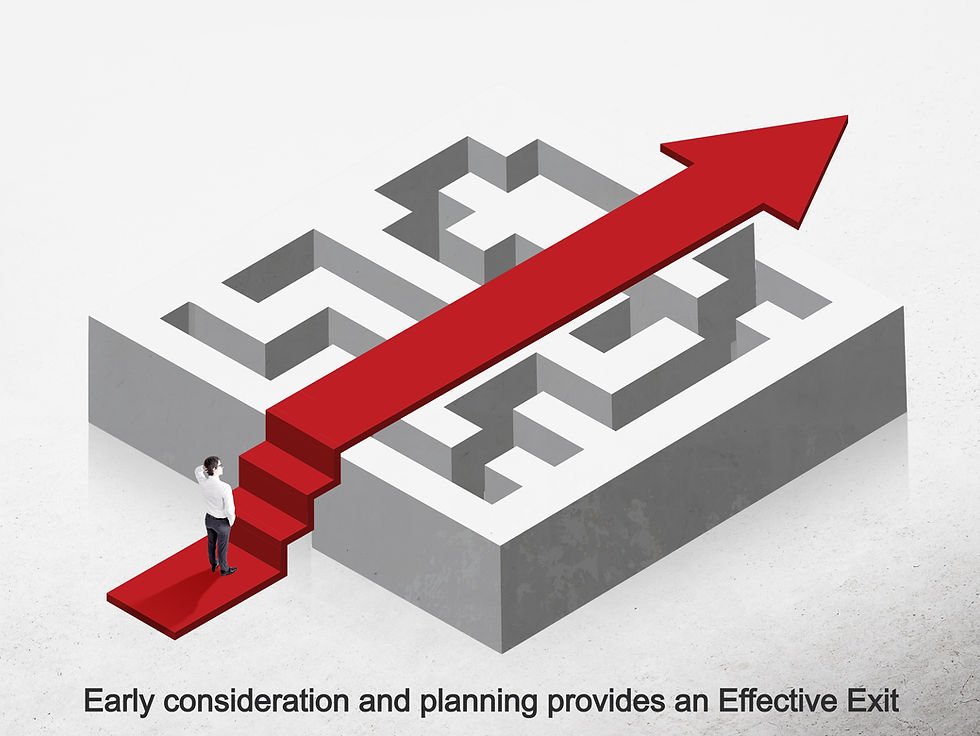Effective Exit
- Peter Hanney

- Nov 14, 2019
- 3 min read
Updated: Jan 26, 2021
As I sit on the train typing this, MPs are debating Boris Johnson's deal to exit the EU. So it feels like the perfect time for a post about the second hardest part of an Technology Outsource contract…… Exit.
[The hardest part is getting a good and effective deal in the first place, but we'll write about that elsewhere]
I have supported and or worked for several outsource deals where exit of the contract has felt like an afterthought. And this seems to be a common pattern. The rationale for this is simple and plausible: "we don't know what the strategy will be, who the replacement supplier will be or even if we'll have one. So how can we lay down rules for the future?". So, typically a standard template exit schedule is produced by the commercial team with some standard clauses everyone then forgets about it until contract extensions or recompete come around.
This approach, however, leads to several predictable outcomes……
Exit strategy and costs are negotiated at the worst possible time…. When the client has a hard deadline approaching to introduce a replacement service and when the supplier knows they have lost your business and that there is little more to make. Or in summary, when you as the customer have the least leverage to negotiate of any point during your relationship.
Standard service exit requirements such as data migration, knowledge transfer end up becoming time & materials work, subject to resourcing, need planning by the client and so on.
Exit becomes a client-lead activity, where you as the customer end up having to plan the exit of the service that the supplier is supposed to be the expert for.
The most cynical suppliers will use the fact that you have given them pretty much zero liability for the exit process to just work a little slower, hold to the precise letter of every change request and eek out the timeline, knowing that their subtly and entirely justifiable poor support of the process can only result in an extension of their service.
All of these issues stem from breaking what we consider to be the cardinal rule of outsourcing:
"Make sure your supplier is incentivised to deliver the outcomes that you want"
We encourage customers to really think about the exit schedule of contracts in procurement, when you have the maximum leverage to negotiate and we're creating our own Effective Exit process and templates to help with this key activity. That small effort at the start will simplify the exit effort later.

We know that there are key things that you will need from your outsource in 2-5 years when you consider exiting. And the time to agree those is during procurement when you have maximum leverage to negotiate.
A few examples include….
Contract your supplier to provide an exit team, such that they don't have delays resourcing every single activity;
Ensure that your organisation or your replacement supplier has the right to install migration tooling and is given the necessary access and system rights to do so.
Set a time table for key exit activities.
Ensure documentation is maintained in a shared library with the supplier throughout.
Think about what should happen if your incumbent supplier wins a competition for the replacement system, ensure the change of contracts cannot be used to pass transition risk and cost to you as the client.





Tired of the endless scrolling for home inspiration? A great home is all about personalization! You can now find and collaborate with amazing online interior designers who can bring your unique vision to life—all from the comfort of your couch.
Ready to start your design journey? Check out the link in our bio to find your perfect match and get a home that's truly yours. ✨